Traipsing around Tulum
Tulum Wasn’t Always A Tourist Trap: A Ruined Ruin- Travel Tales from the Land of the Maya #4
Of all the Maya sites I’ve ever visited, Tulum is my least favorite at the moment. Tourism ruined the ancient ruins in the past few decades. Overcrowded, over-touristed, everything about it screams tourist trap. It is the only site I never revisit, no matter how often we drive by it. Against my better judgement, I revisited about two decades ago; I wanted to show it to my children. Standing in line for hours, then following the same line along a corded-off trail in only one direction, we couldn’t even see much of the structures. Jeff refused to go, and since then I joined him in the decision to not return to Tulum.
However, once upon a time, when I first visited it, I loved the ancient city. It was 1995. We shared the site with a handful of visitors; we could get much closer to the ancient structures, climbed some and even entered a few. Quiet, deserted, the only Maya city visible from the ocean was a joy to explore.
Dear Reader,
Welcome to another installment of my future travel memoir about exploring the land of the Maya (both ancient structures and present-day towns). If you are new here, you can read the first three posts in this series here:
You can always find the series on the navigation bar of the site, under Travel Tales from the Land of the Maya.
After visiting Xel-Ha Ruins and swimming in the lagoon, we spent the night on the beach, in a palapa-roofed stand-alone room, rented from a fisherman who cooked us his catch of the day for dinner. Though he had three rooms for rent on the beach, we were his only customers that night. After dinner, he joined us for drinks, as we talked (or attempted to talk) in a mix of broken Spanish and English about his life on the coast.
The stars appeared bright against the darkening sky, adding to the quiet, calm atmosphere. We sat in the cool powder-soft sand for what seemed like hours, watching the constellations show up one by one and listening to the soft sound of the waves gently rolling on the shore.
Watching the Orion constellation from the Land of the Maya I saw it the way they did. The ancient Maya saw the triangle formed by Orion’s belt and feet as the hearthstones of creation (like the triangular three-stone hearth at the center of traditional Maya homes). At the center of this triangle, the Orion nebula, is the cosmic fire of creation surrounded by smoke. The nebula is visible to the naked eye as a slightly fuzzy star, which the ancient Maya interpreted as smoke from the fire.
Eventually, we went to bed in the little palapa hut with no windows, where the gentle sound of the waves put us to sleep.
In the morning, we were off to explore the ruins of Tulum.
The word Tulum derives from Mayan for “wall”, “fortification”, or “fortress”, fitting for the ancient city on the beach. It indeed looks like a fortress, surrounded by walls on three sides, and the sea on the fourth. On the seaside, they didn’t need to add walls; High cliffs about fifty feet tall protected it from invaders.
However, the original name of the city was Tzamá (or Zamá), a Mayan word for “City of the Dawn”, just as fitting, since the city faces the sunrise if you think of it as seen from the ocean, and somehow more beautiful.
“Of all the larger Mayan cities known, Tulum is certainly the strangest and the most awe-inspiring. (…) Tulum was the first sign, with the other cities on the coast, that there was anything like a powerful culture on the American continent. (…) suddenly the Spaniards spotted the first city of the New World, the city of Tulum, which rises up on the summit of the only cliff on the Quintana Roo coast.,” wrote Michel Peissel, in his book “The Lost World of Quintana Roo, published in 1963.
Indeed, Tulum is the only ancient Maya city on the beach overlooking the ocean. With most of its structures built between 1200 and 1450 AD, it dates from the Post-Classic period of the Maya civilization; it was one of the few cities still occupied when the Spaniards arrived.
In fact, it remained occupied for about another seventy years. With its fortress-like design, no army could defeat it. Unfortunately, the diseases brought by the Spaniards eventually did the job.
Looking at it from the ocean side, the way the Spaniards must have seen it, they faced a huge blank wall. This is the backside of the Castillo, the main structure, built on top of the cliff. From the ocean, it looks like a large, blank wall of a citadel.
Unlike the Spaniards, and much later, in 1843, John Lloyd Stephens and Frederick Catherwood, who wrote about the city in Incidents of Travel in Yucatan, I didn’t approach the peninsula on a boat. Still, the site was awe-inspiring.
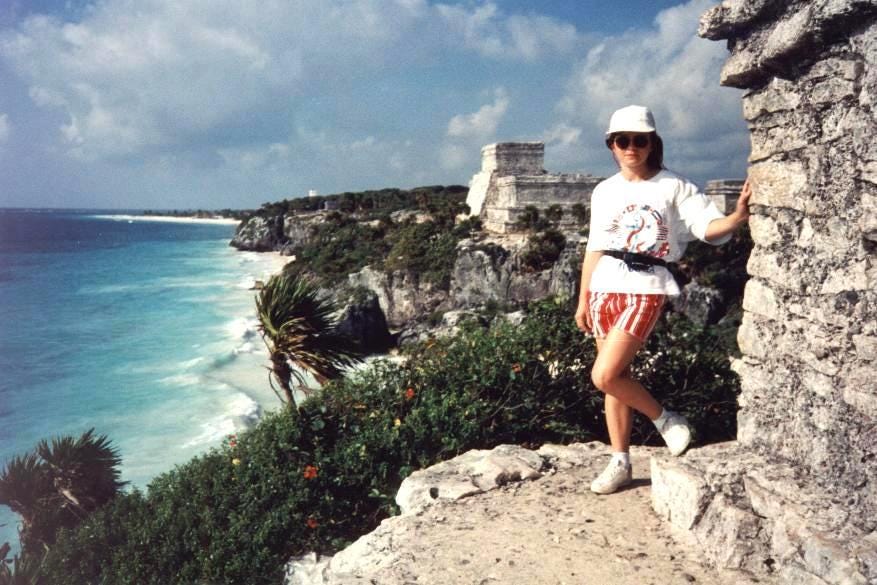
I recognized the Castillo from the Catherwood drawing in our book. Still, seeing it in person was amazing! It was larger and more impressive than anything I’ve seen in Xel-Ha.
As impressive as its structures are, Tulum is a small site. In fact, it is only about 16 acres altogether, and archaeologist Michael D. Coe suggested it was home to only about 500-600 people. It seems to have been more important as a major trading center than a city people lived in.
As a trading center, though, it was sitting in the perfect spot, accessible both from the ocean and from inland. And they could control who entered the city, its walls keeping all the uninvited visitors out.
Centuries later, the same walls made it easier to understand it, since they enclosed all the interesting structures within them. The site’s small size made it easy to visit.
The first explorers who visited and wrote about were the American John Lloyd Stevens and British artist Frederick Catherwood in 1841. They approached it from the sea, on a boat from Cozumel island. However, in their time, it was hard to get to the site, and even harder to see all the structures overgrown with vegetation. They had local helpers who cut trees and shrubs around the major structures to help see them.
By the time we visited, the structures were cleared, so we could see them in their entirety, enter some and get close to others.
The gate we entered through was in the center of the site’s western wall. From there, the first temple we saw was the Temple of the Frescoes, one of the most spectacular buildings at the site.
Dating from the 11th century, the two-story building’s most remarkable features are the murals on its inside walls. Four columns guard the door on the first story, and three niches above the door hold god figures, with the diving god in the center. Inside the doorways, a corridor surrounds an inner chamber with remains of a few mural paintings. The upper story has one room with a doorway. We noticed niches with remains of sculptures above all the doorways.
But it was the murals that held my attention the longest - not only because they were impressive, but I was trying to figure out what they represented. As I found out later, most of them are different forms of the Moon Goddess Ixchel, often her aged version. She is represented as an old woman with a serpent headdress carrying a serpent staff in her hand and a maize symbol on her back. She is the waning moon, descending into the waters of the Underworld.
When we finally left the Temple of the Frescoes, we walked over to the House of Chultun, named for the water storage center it was built upon.
The next structure nearby we explored was the Palace, with four rooms and a long colonnade. Near it, another small structure also held a diving god figure above its doorway.
Past this cluster of structures, we walked up the hill to the main ceremonial center, dominated by the Castillo.
The Castillo is the most imposing structure at the site. Encasing an older pyramid (a common strategy the ancient Maya used), it stands on top of the edge of a cliff, and faces away from the sea. At only 25 feet tall, it is shorter than some of the most impressive pyramids on the peninsula. However, it is spectacular because of its setting.
No wonder, since, similar to the Pyramid of Kukulcan, two carved serpent heads guard the sides of the stairway leading to the temple on top of Tulum’s Castillo. The same motif is also present on the top, at the entrance to the temple, where two serpent columns form the doorways. Above them, three niches held reliefs of ancient gods, one of them still home to the Descending God.
Near the Castillo, on its north side, is the Temple of the Descending God, named for the stucco of the god above the doorway.
The Descending God was an important deity in Tulum; the site is filled with his image on many of its structures. Associated with Ah-Muzen-Cab, the Bee God, he is the protector of bees and the creator of the Earth and Universe in the fourth and final cycle of the cosmos, according to the Popol Vuh, the creation story of the Maya. He is also associated with the planet Venus.
Two smaller pyramids flank the Castillo along the cliff overlooking the ocean. North of it is the Temple of the Wind God, a circular structure, while south from it stands the Temple of the Sea.
We spent a lot of time in Tulum on that spring day in 1995, walking in and out of the structures, discussing things we read and documentaries we watched together about them and the images we saw at the site, while enjoying the breeze coming from the ocean, especially pleasant on top of the pyramids.
Would I revisit Tulum ruins ever again? Probably not. I visited it several times before it became as popular as it is today, and I prefer to remember it like that.
I understand - and agree with - the need to protect the structures by closing them to the public. You can still see them all from the manicured trails, but considering the site’s popularity, it would not be possible to let everyone get closer to them.
I am grateful I saw it when it was still a little-known site, with a handful of visitors.
References:
Peissel, M. (1963). The Lost World of Quintana Roo
Stephens, J. L. (1843). Incidents of Travel in the Yucatan - Volume II (1963 ed.). Dover Publications, Inc.
Milbrath, S. (1999). Star Gods of the Maya. Astronomy in Art, Folklore, and Calendars
Freidel, D., Schele, L., & Parker, J. (1995). Maya Cosmos: Three Thousand Years in the Shaman’s Path


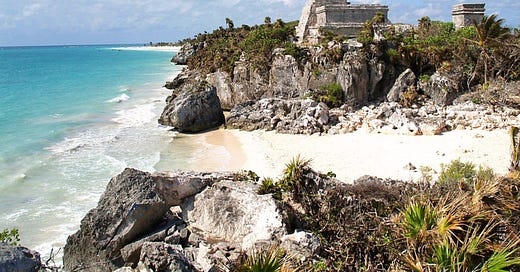



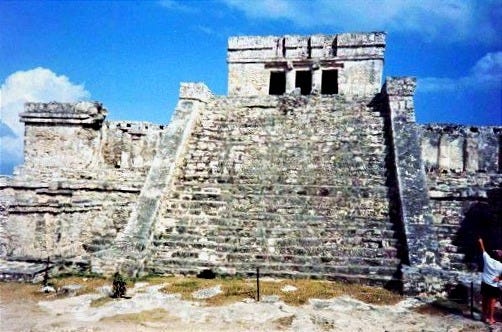
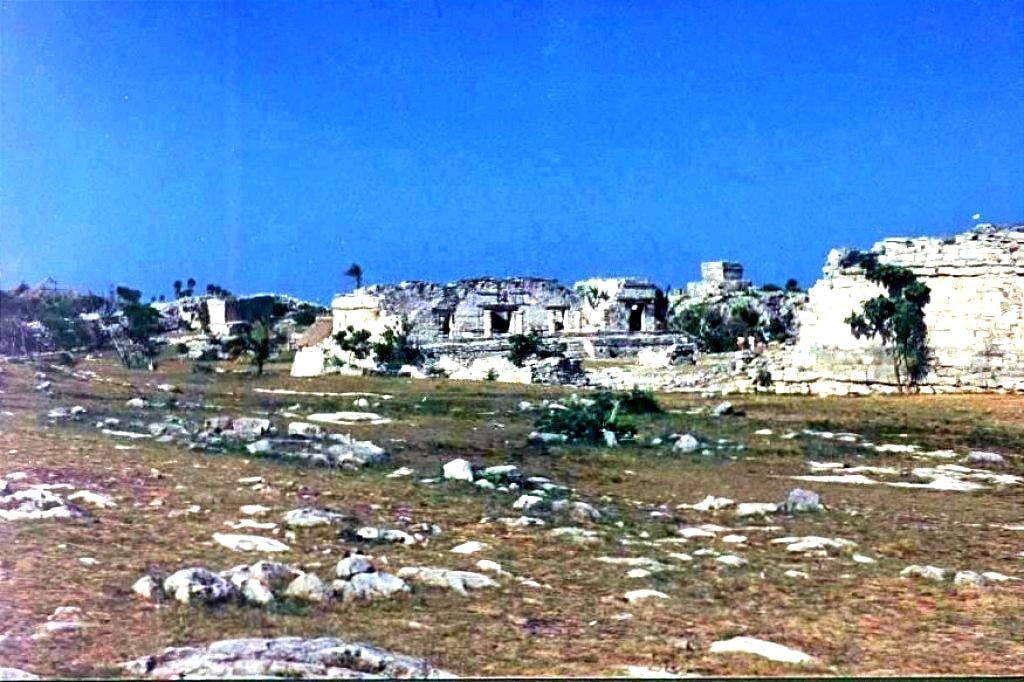
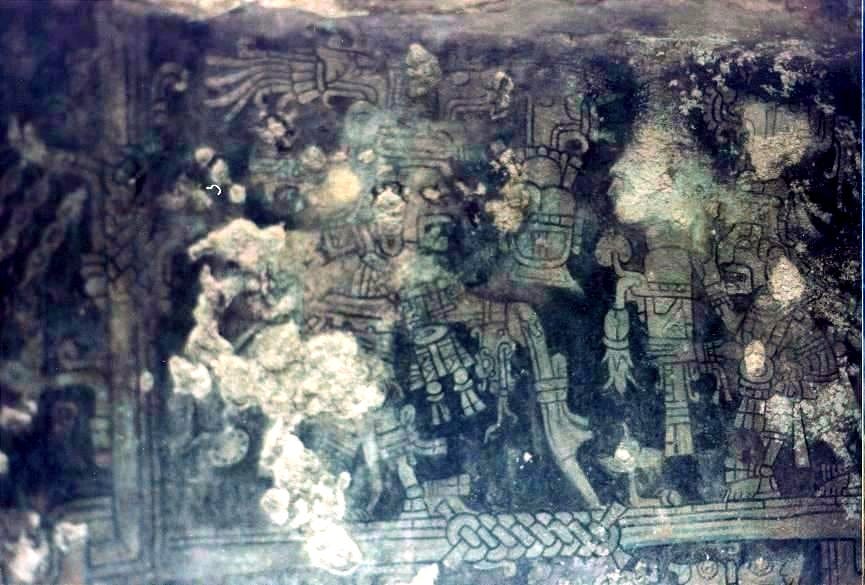
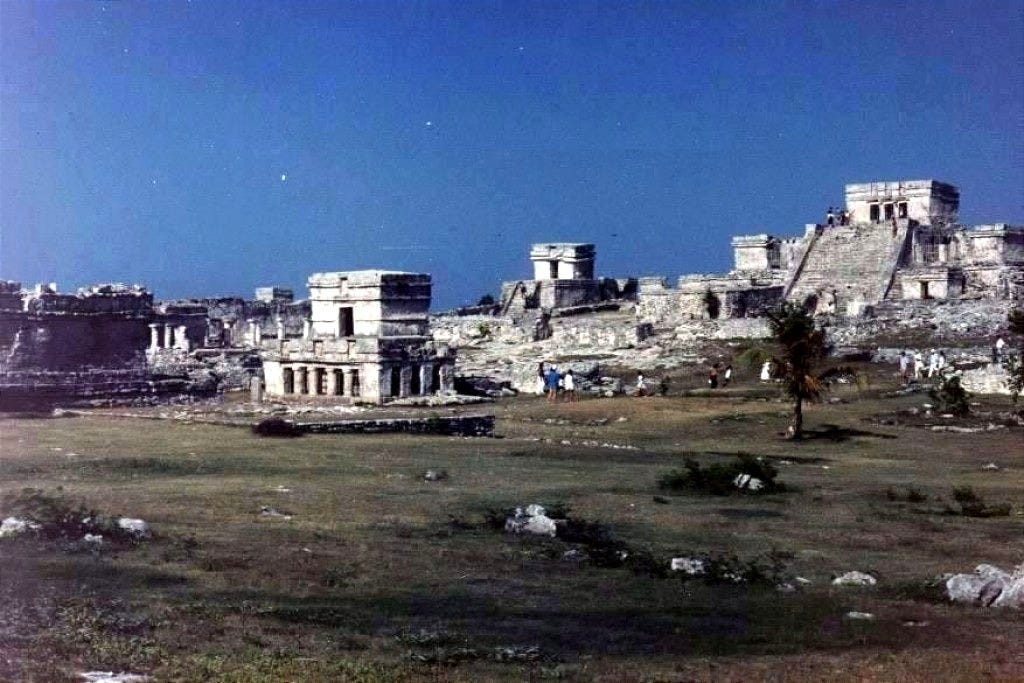
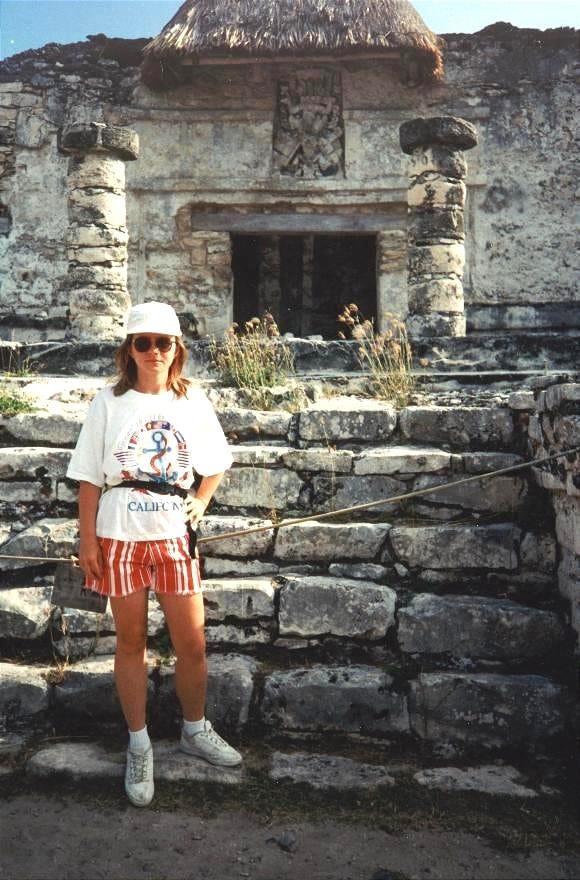
Beautiful Tulum! And your photos are wonderful. It really was incredible when there were no tourists. Good post, Emese!! Loved those great old memories.
I had the good fortune to visit Tulum about 20 years ago. In August (oh my God, that thick oily layer of sweat!) and was still glad to have had the opportunity.